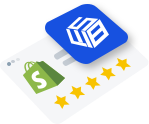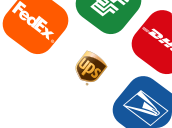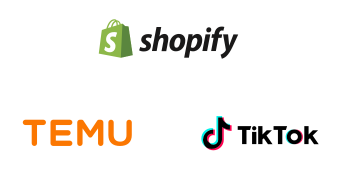2025 3PL First-Mile Freight Costs Guide: Breaking Down Sea vs Air Shipping Fees for US Cross-Border E-Commerce
Quick 3-Step Guide to Your 2025 3PL First-Mile Freight Costs
Quickly spot risks and savings. Tap cards to expand.
📊
Step 1 – Identify Your Risks
Tap to expand for your risks↓
Step 1 – Identify Your Risks
Tap to expand for your risks↓- Small <500kg/month: THC fees, de minimis duties apply.
- Mid 800–1500kg: LCL surcharges, FCL volume limits.
- Large >1500kg: Detention, inventory imbalance.
🧮
Step 2 – Calculate Landed Cost
Tap to expand formula & example ↓
Step 2 – Calculate Landed Cost
Tap to expand formula & example ↓= (Weight_KG * Rate_per_KG) + (Value * (Tariff_Base + 10%)/100) + (CBM * THC_35) + ...
Example: 400kg / 10 CBM electronics, $2,000 → Sea: ~$1,373, Air: ~$2,050 → Save $677 (25%)
- Paste formula into Excel or Google Sheets
- Enter weight, CBM, value, HS code (usitc.gov/hts → electronics → HS85xx)
- Add buffer days for potential delays
🚢
Step 3 – Choose the Right Strategy
Tap to expand strategies ↓
Step 3 – Choose the Right Strategy
Tap to expand strategies ↓- Small: Air + small-package; maintain 15-day buffer stock. Avoid LCL minimum thresholds.
- Mid: Shared FCL 10–15% savings, lock quarterly space, use LCL + dedicated line for misc fee reduction.
- Large: 80% sea + 20% air, pre-plan stock, contract free detention days.
Case: Mid-tier seller Mike saved $8K and reduced turnover from 42 → 28 days by switching strategy.
For US e-commerce sellers, 2025 freight is a balancing act:
You need to ship fast enough to keep Amazon customers happy… but air freight at $6/kg can crush your ROI.
You want to save with sea… but LCL’s “1CBM minimum” can trap you into overstocking.
De minimis is gone, HS codes are trickier, and demurrage fees hit $120/day—one mistake and your quarter’s profit could vanish.
I wrote this articlefor sellers who’ve had enough of “guesswork freight”:
- Skip the 45-minute Google searches—our 10-second self-check tells you if duties, fees, or delays are your biggest risk.
- No more “close enough” math—our Landed Cost formula includes every hidden fee (THC, LCL ops, even Q4 detention).
- See exactly how Mike saved $8k in Q3 (he ships 400kg/month—just like you) with a simple air/sea mix.
This isn’t theory. It’s the same solution we’ve used with 1,000+ US sellers to cut freight costs by 15–25%.
Take control of your freight costs—use Winbs check to see exactly what needs attention.
2025 First-Mile Freight Trends: Up 4-7% Overall, But It's All About the Splits
2025 US cross-border shipping fees are splitting wide: LCL sea runs $1.1–2.1/kg on transpacific routes (up 20–25% YoY), FCL 20ft containers cost $3,500–4,800/unit. Economy air holds $3.2–6/kg, spiking to $6–7/kg during Q4 peaks.
Policy alert: De minimis suspension begins Aug 29 for parcels under $800 (duties 3–6% + 10% baseline). B2C commercial shipments remain HS-based (e.g., electronics 3.5–5.6%).
Transit update: Red Sea detours add 2–5 days in Q4; port congestion may worsen delays. IATA forecasts +5% air demand but rates remain flat.
Seller impact: Small-batch shippers face misc fee jumps of 20% (THC costs rise), bulk shippers risk inventory mismatches.
Quick action: Run the 10-second check below to identify if duties, fees, or delays are your top risk.
 10-Second Self-Check: Freight Costs & Risks
10-Second Self-Check: Freight Costs & Risks
| Seller Type / Monthly Volume | Core Costs & Challenges | Risk Level | Recommended Action |
|---|---|---|---|
| Small-Batch Sellers (<500kg/month) |
De minimis duties apply on <$800 parcels (3–6%) THC fees may represent 15–25% of shipping Fast turnover increases handling risk |
High | Check Landed Cost; prioritize fast/air shipments; maintain small buffer stock |
| Mid-Volume Sellers (800–1500kg/month) |
LCL surcharges 10–20% on some routes FCL minimums may impact flexibility Seasonal peaks require careful space planning |
Medium | Balance LCL/FCL shipments; plan quarterly bookings; monitor demurrage fees |
| High-Volume Sellers (>1500kg/month) |
Detention fees $50–80/day Inventory imbalances possible if demand fluctuates Sea freight preferable for cost efficiency |
Low | Leverage sea freight; pre-plan stock levels; optimize warehouse rotation |
Identify your scale → Review costs & risks → Apply recommended actions to reduce shipping expenses.
Full Landed Cost Calc Formula:
 Freight Cost Calculator
Freight Cost Calculator
= (Weight_KG × Rate_per_KG) + (Value × (Tariff_Base + 10%) / 100) + (CBM × THC_35) + (Delay_Days × Demurrage_120) + (Value × 0.5% Insurance) + (LCL_Fee_65 / Ticket)
Total Cost: —
Contact WINSBS for Detailed QuoteVar Breakdown: Tariff_Base = HS rate (electronics 3.5-5.6%); THC = Port handling $35/CBM; Demurrage = $120/day; Insurance = 0.5% of value.
Example: 400kg / 10CBM electronics, $2000 value, HS 3.5% +10%: Sea $1.6/kg → $1,373 (~$3.43/kg); Air $4.5/kg → $2,050 (~$5.13/kg) — Save $677 (25%).
Seller-Tier Strategies:
Now that you’ve crunched the numbers, let’s match you to a strategy that actually fits your workflow—no jargon, just solutions to your biggest headaches.
Quick summary:
- <500kg/month: LCL minimums (1 CBM / ~353 lb) force overstock. Use air freight + small parcels to avoid minimums.
- 800–1500kg/month: Too large for costly LCL but too small for a full container — consolidated (shared) FCL splits the cost.
- >1500kg/month: Mix sea and air to avoid stockouts and overstock caused by one-size-fits-all shipping.
Small-Batch (<500kg/month) — Fast-moving goods
Recommended: Air + small parcels (typically $4–$6/kg, 7–10 day delivery).
How to implement
- Pick a carrier: Use services like ShipBob or WINSBS. Sign up, enter weight and HS code, and get a quote. Many providers have no minimum under ~50kg (110 lb).
- Mix transport: ~70% air for urgent restocks and ~30% sea for backup inventory.
- Reorder trigger: Restock when stock drops below 15 days of average sales; automate with Excel or an inventory tool.
- Avoid LCL minimums: LCL providers often bill a full 1 CBM even for smaller shipments—air + small parcels avoids that “empty-space tax.”
Mid-Volume (800–1500kg/month) — Large items
Recommended: Shared FCL (consolidated shipping) or LCL plus a dedicated freight line.
How to implement
- Consolidated FCL: Search marketplaces like Freightos for “consolidated FCL Shanghai to US.” Filter for verified providers and match with 3–4 partners selling similar non-hazard goods.
- If FCL is too large: Use LCL + an end-to-end dedicated line (for example, Flexport’s LCL services). Upload your bill of lading, choose delivery, and let the forwarder handle customs—this can reduce miscellaneous fees by ~8–12%.
- Quarterly space lock: If you approach ~20 m³ (710 cu ft) annually, negotiate quarterly space locks with 2–3 forwarders to secure 5–8% discounts.
High-Volume (>1500kg/month)
Recommended: 80% sea + 20% air mix to stabilize stock and reduce cost.
How to implement
- Seasonal planning: Stock up during slower seasons (Q3) to avoid rush bookings in Q4. Forecast demand with Excel or platform reports and buffer 15–20 days of inventory.
- Negotiate free detention: Include “7 days free detention” in contracts to avoid $50–$80/day late fees.
- Reorder trigger: When (in-transit + current stock) < 15 days of sales, initiate replenishment. Use GA4 or an inventory system for alerts.
Action Steps
- Identify your tier (small / mid / high) based on monthly kg shipped.
- Follow the playbook for your tier above.
- Recalculate your landed cost after changes. If miscellaneous fees still exceed ~20% of total landed cost, adjust your air/sea mix or switch carriers.
Real Case: Indiegogo Seller Mike's $8,000 Optimization Path
Does mid-tier pain sound familiar? Mike sells electronics, shipping 400–500 kg/month with an average order value (AOV) of $45. He was stuck with 18% of his budget going to miscellaneous fees and 42-day inventory turns — until he switched to a mixed air + small-parcel strategy (using a U.S.-friendly 3PL). Here’s how he did it:
What he did
He split shipments 70% air (for restocks at $4.2/kg) and 30% sea (for backup). To avoid stockouts he set a restock trigger of 15 days of average sales (for example, 100 units/day → 1,500-unit trigger) plus a 500-unit (5-day) buffer.
He used the USITC HTS Database to check his product’s HS code (HS8528.51.0000 for his tablet displays).
The “Additional Duty” field said “Not Applicable,” so he avoided the 10% baseline surcharge and paid only the base duty (about 3.5%).
He avoided $240 in detention fees by booking with a forwarder that offered 7 free detention days. By Q3 he saved $8,000 across four shipments (after occasional $65 LCL fees). Outcomes: margins +16%, inventory turns = 28 days, and damage rate ≈ 0.3%.
Action Steps (copy for pros)
- Set your restock trigger: Use Shopify Inventory, TradeGecko, or Sheets.
- Pick a U.S.-friendly 3PL: Sign up with providers like ShipBob or WINSBS. Input your HS code into their quote tools for an all-in price. For a tailored quote and 1-on-1 help, contact WINSBS.
- Add a 5-day buffer: Forecast demand (Shopify Reports or similar) and add five days of stock to your trigger (example: 1,500-unit trigger + 500-unit buffer = 2,000-unit restock point).
2025 US E-Commerce 3PL Tool Guide: Tiered Picks for Freight & Inventory
Below is a tailored tool list for U.S. cross-border sellers—prioritizing usability, U.S. market fit, and seamless workflow integration. WINSBS is listed first as an SMB-friendly 3PL option with no order-volume limits and built-in promotions for new users.
| Tool Category | Tool Name | Core Features, Pros & Cons | Best For | Quick Steps + Pro Tips |
|---|---|---|---|---|
| Inventory & Freight Mgmt | WINSBS |
Pros: SMB-friendly (no order-volume minimum), no platform gate or threshold; 30 days free warehousing for new accounts; first parcel free; additional discounts for large-volume users; fast U.S. customs clearance (avg. 3 days); DDP shipping options; integrated first-mile + warehouse solutions; transparent pricing with no hidden surcharges. |
SMB sellers (1–2000 orders/month) and sellers scaling into the U.S. market |
1. Visit WINSBS → Sign up and add SKUs (include HS codes & dimensions). 2. Simulate DDP cost, review warehouse options, and claim 30 days free warehousing and first-parcel free promotion. Pro Tip: Email Yann@winsbs.com for account support or to discuss large-volume discounts. |
| Freight Cost Calculator | ShipBob |
Pros: U.S.-based 3PL, door-to-door pricing (no hidden fees), FBA integration, fast domestic delivery; Cons: Less optimized for direct Asia→US LCL (better for U.S. warehouse restocks). |
Newbie small-batch sellers (<500kg/month) selling on Amazon/FBA |
1. Visit shipbob.com → Enter cargo weight (kg), CBM, and destination. 2. Compare sea/air quotes and export Excel breakdowns. Pro Tip: Use “FBA Prep Add-On” to avoid Amazon per-unit labeling fees. |
| Freight Cost Calculator | Flexport |
Pros: Asia–US coverage, real-time rate comparison (sea/air), 24/7 U.S. support, detailed misc fee breakdowns (THC, detention); Cons: $50 minimum quote fee on very small shipments. |
Multi-shop mid-volume sellers (800–1500kg/month) on Asia→US lanes |
1. Sign up at flexport.com → Input HS code and cargo specs. 2. Download the all-in cost report and flag misc fees. Pro Tip: Commit to 3+ shipments/quarter to waive small-ship quote fees. |
| Inventory & Freight Mgmt | TradeGecko |
Pros: Auto-inventory forecasting, multi-channel sync (Shopify/Amazon), U.S. warehouse integrations; Cons: Starts at a paid plan (no full free tier for larger users). |
Large sellers (>1500kg/month) with multi-platform sales |
1. Sign up → Link sales channels and import SKUs. 2. Set “in-transit + stock” alerts for automated restock triggers. Pro Tip: Use Freight Sync to pull WINSBS rates into your dashboard. |
| Duty & Tariff Lookup | U.S. ITC HTS Database |
Pros: Official U.S. government tariff data, free and up-to-date; Cons: Manual lookup only (no bulk import). |
All sellers (especially high-value electronics & goods) |
1. Visit usitc.gov/hts → Search product keyword → Select HS code. 2. Record the General Rate and check Additional Duties. Pro Tip: Save HS codes in a Google Sheet for faster WINSBS quote requests. |
| Duty & Tariff Lookup | Avalara AvaTax |
Pros: Auto product-to-HS mapping, bulk lookups, Shopify/WINSBS integrations; Cons: Free tier limited to small number of queries. |
High-volume sellers (>1500kg/month) with 50+ SKUs |
1. Sign up → Input product descriptions and export tariff reports. 2. Sync reports with your WINSBS account for automated duty estimates. Pro Tip: Upgrade if you exceed free-query limits to save on pay-per-query costs. |
| Freight Rate Trends | Freightos Baltic Index (FBX) |
Pros: Free quarterly Asia–US rate forecasts and delay alerts; Cons: General market rates only (no SKU-level granularity). |
High-volume sellers booking seasonal shipments (Q4) |
1. Visit freightos.com/fbx → Select your route and timeframe. 2. Use the forecast to time bookings and avoid Q4 spikes. Pro Tip: Book WINSBS sea freight early when FBX signals upcoming rate increases. |
Get Help & Support
If you need account support, our customer team is ready to help.
Email (support): Yann@winsbs.com
Sales & expert advice: Call +1 503 867 9932
No order volume minimums or hidden thresholds. New accounts receive 30 days free storage and the first parcel is shipped free. Large-volume customers are eligible for additional discounts—email our team to discuss tiered pricing.














